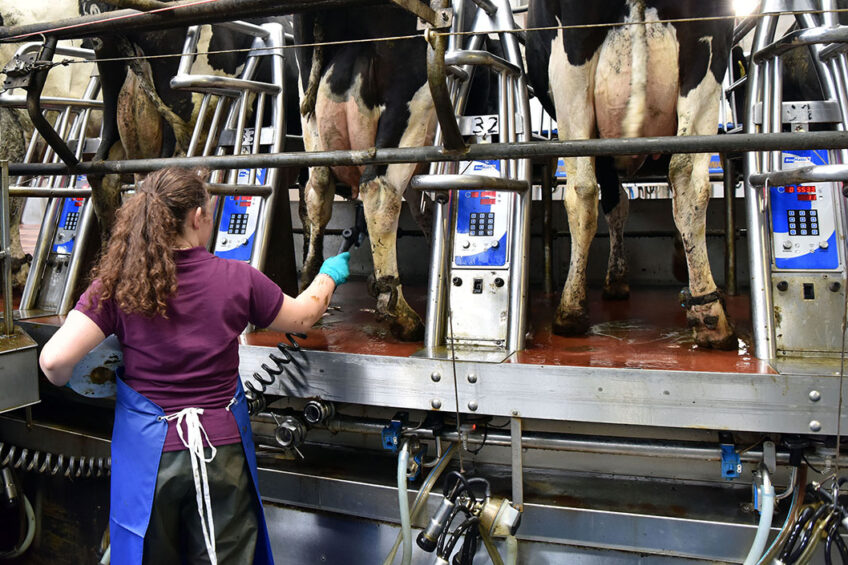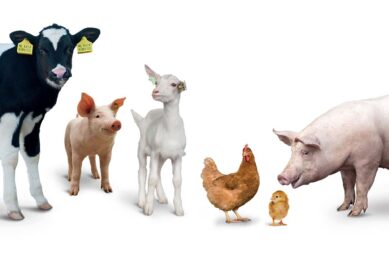Selective dry cow therapy to curb antibiotic use in dairy cows

Within the dairy sector, there appears to be considerable potential to reduce antibiotic use through the adoption of selective dry-cow therapy. Positive results have emerged from a recent study.
The livestock sector is facing mounting pressure to reduce antibiotic use as a result of the global threat from the emergence of antibiotic-resistant strains of bacteria. Considering this, the Agri-Food and Biosciences Institute (AFBI), in partnership with AgriSearch, Animal Health and Welfare Northern Ireland, LMC and Farm Vet Systems, is leading a major research project entitled ‘STrategic AntiMicrobial use in Dairy, Beef and Lamb Production’ (STAMP), as reported by Aimee Craig and Conrad Ferris (AFBI Hillsborough).

Selective dry cow therapy
‘Blanket’ or conventional dry-cow therapy (DCT), whereby all quarters of all cows are treated with an antibiotic at drying-off, has been common practice on most dairy farms for many years. This is justified by the fact that dairy cows are particularly susceptible to mammary infection during the dry period, and that antibiotic DCT provides an opportunity to prevent new infections from arising, as well as treating existing infections.
However, as a result of improvements in milking hygiene, together with the more widespread use of sires with the potential to reduce somatic cell counts (SCC) and mastitis incidence in their offspring, bulk tank SCC on many farms have fallen in recent years from 250,000 cells/ml in 2009 to 196,000 cells/ml in 2018 (DAERA statistics).

Taking this into account, and given the concerns about antibiotic resistance, farmers are being challenged to consider if it is necessary to treat all cows in their herds. Indeed, the use of selective dry-cow therapy (SDCT) whereby only ‘high risk’ cows are treated with antibiotics at drying-off, may provide an ‘easy win’ strategy to reduce antibiotic use within the dairy sector. However, a common concern is that the adoption of SDCT may increase the incidence of mastitis during the next lactation, meaning that any reduction in antibiotic use at drying-off will be off-set by the increased use of antibiotics during the subsequent lactation.
Selective dry-cow therapy study
A 2-year study is being undertaken to examine the impact of SDCT within the AFBI Hillsborough dairy herd. The first year of this study involved about 220 dairy cows that were identified as ‘high risk’ or ‘low risk’ based on their SCC and mastitis history. ‘High risk’ cows were those that had either one or more incidences of clinical mastitis during the 3 months pre dry-off, or a SCC of greater than 200,000 cells/ml during any of the 3 milk recordings prior to drying-off. These ‘high risk’ cows received conventional DCT, with all quarters treated with an antibiotic tube and a teat sealant at drying-off.
Cows with no incidences of clinical mastitis during the 3 months before drying-off, and with a SCC of less than 200,000 cells/ml during the 3 milk recordings prior to drying-off, were considered ‘low risk’ and were allocated to 1 of 2 treatments. Cows on one treatment received conventional dry-cow therapy (all quarters treated with an antibiotic tube and teat sealant at drying-off) while cows on the other treatment were treated with teat sealant only (SDCT).
Also read: Dietary manipulation for less methane output
The results
The ‘high risk’ group had a mean lactation number of 3.0, compared to 2.1 for the ‘low risk’ group. This highlights that SCC and mastitis incidence generally increases with increasing lactation number. The ‘high risk’ cows had a mean SCC of 273,000 cells/ml during the 3 milk recordings immediately prior to drying off, while ‘low risk’ cows had a mean SCC of 78,000 cells/ml (Figure 1).
Figure 1 – Average SCC (‘000/ml) of ‘high risk’ and ‘low risk’ cows during the 3 milk recordings prior to drying-off (only ‘low risk’ cows were subsequently treated using SDCT).

Source: Agri-Food and Biosciences Institute.
Neither milk yield nor milk composition during the 3 months post calving were affected by drying-off treatment. During the 3 milk recordings post calving, the mean SCC of the ‘high risk’ cows was 214,000 cells/ml. These ‘high risk’ cows had an average of 0.6 cases of mastitis per cow during that period. However, SCC of cows in the ‘low risk’ groups remained low irrespective of whether they were subject to conventional DCT or SDCT (85,000 and 71,000 cells/ml, respectively, Figure 2).
Figure 2 – Somatic cell counts (‘000/ml) of ‘high’ and ‘low risk’ cows during the first 3 milk recordings post-calving, with ‘low risk’ cows having been subject to either SDCT or conventional DCT.

Source: Agri-Food and Biosciences Institute.
‘Low risk’ cows that had been managed on SDCT had a similar incidence of mastitis during the 3 months post calving as those managed on conventional DCT (0.2 cases of mastitis per cow).
The results of the first year of this study have demonstrated that SDCT was successfully adopted on ‘low risk’ cows, without any negative effects on udder health or performance during the subsequent lactation. However, the success rate of SDCT is likely to be determined by the overall SCC of the herd, the protocol used to differentiate between the ‘high risk’ cows and the ‘low risk’ cows, and hygiene at drying-off.










